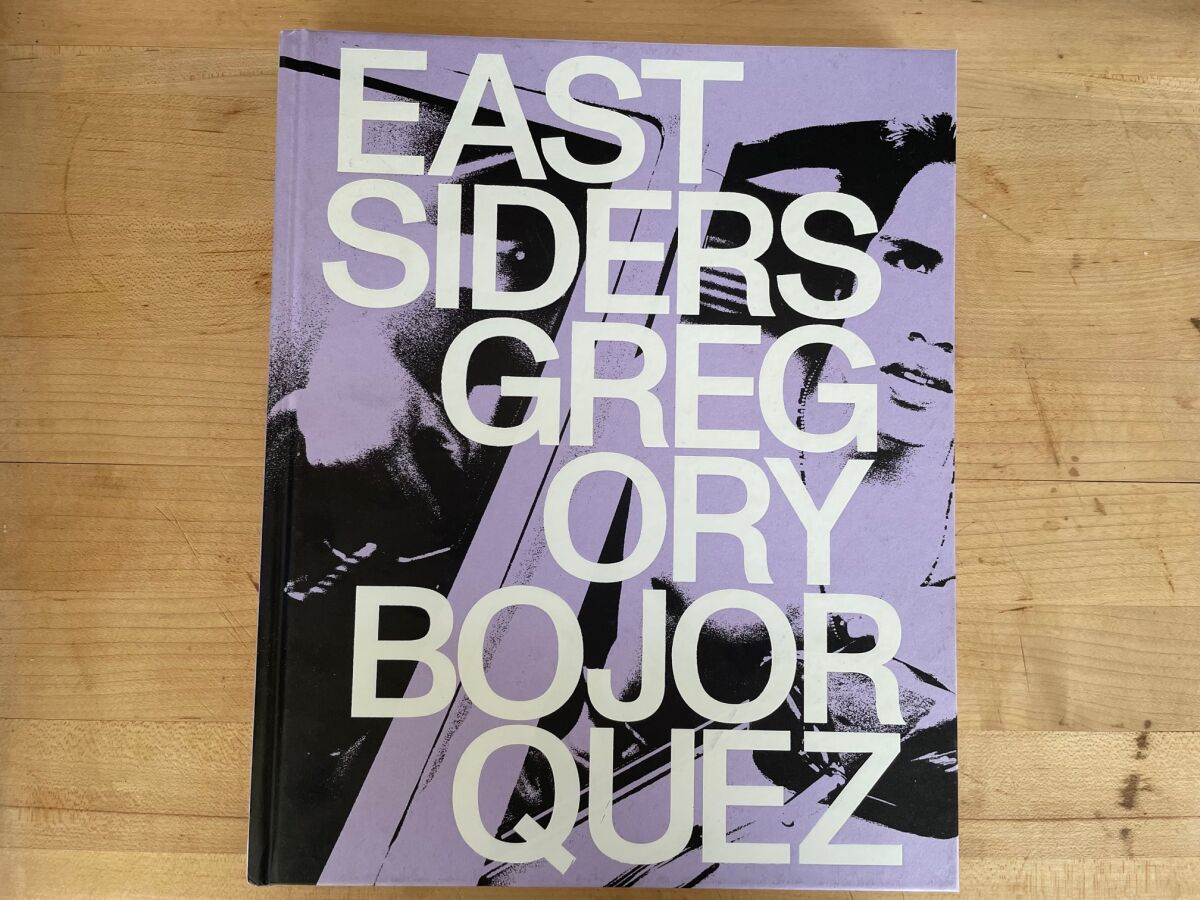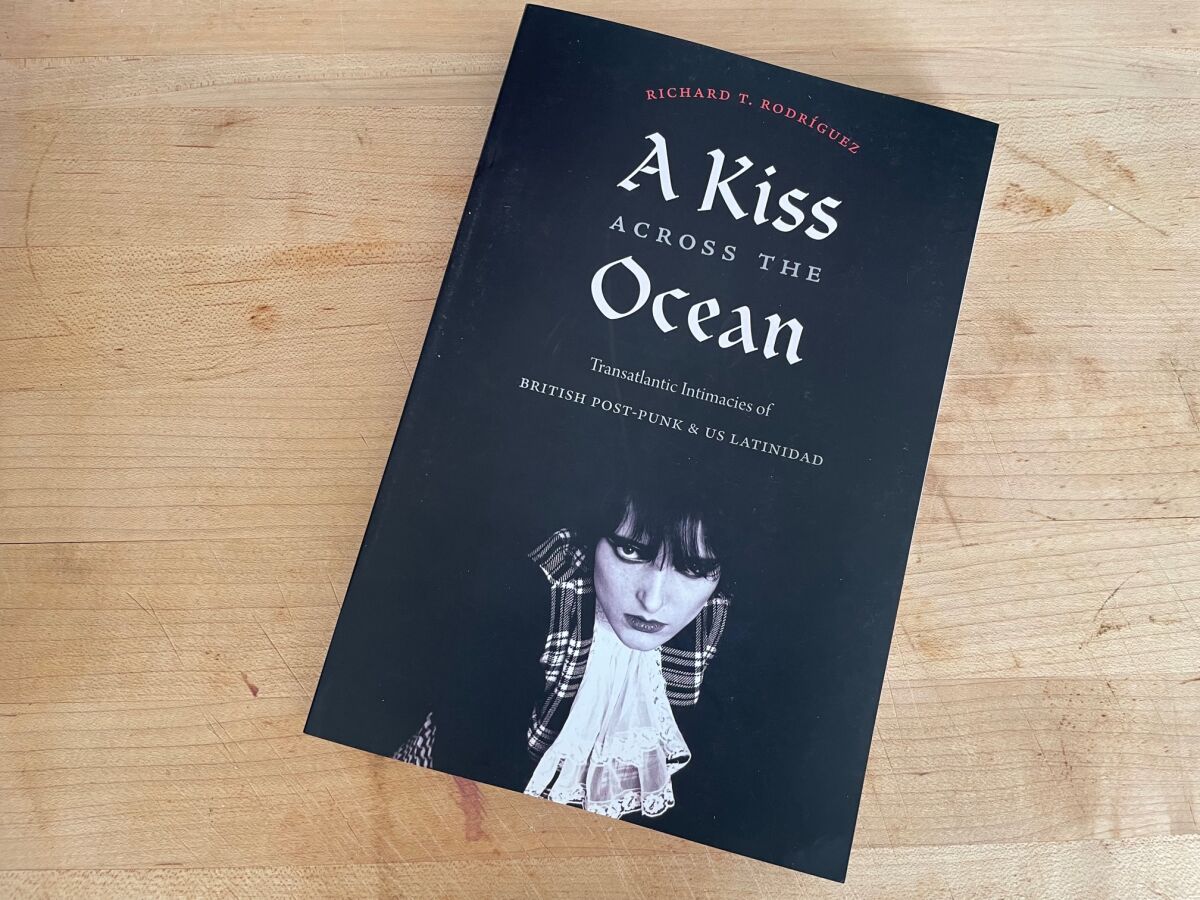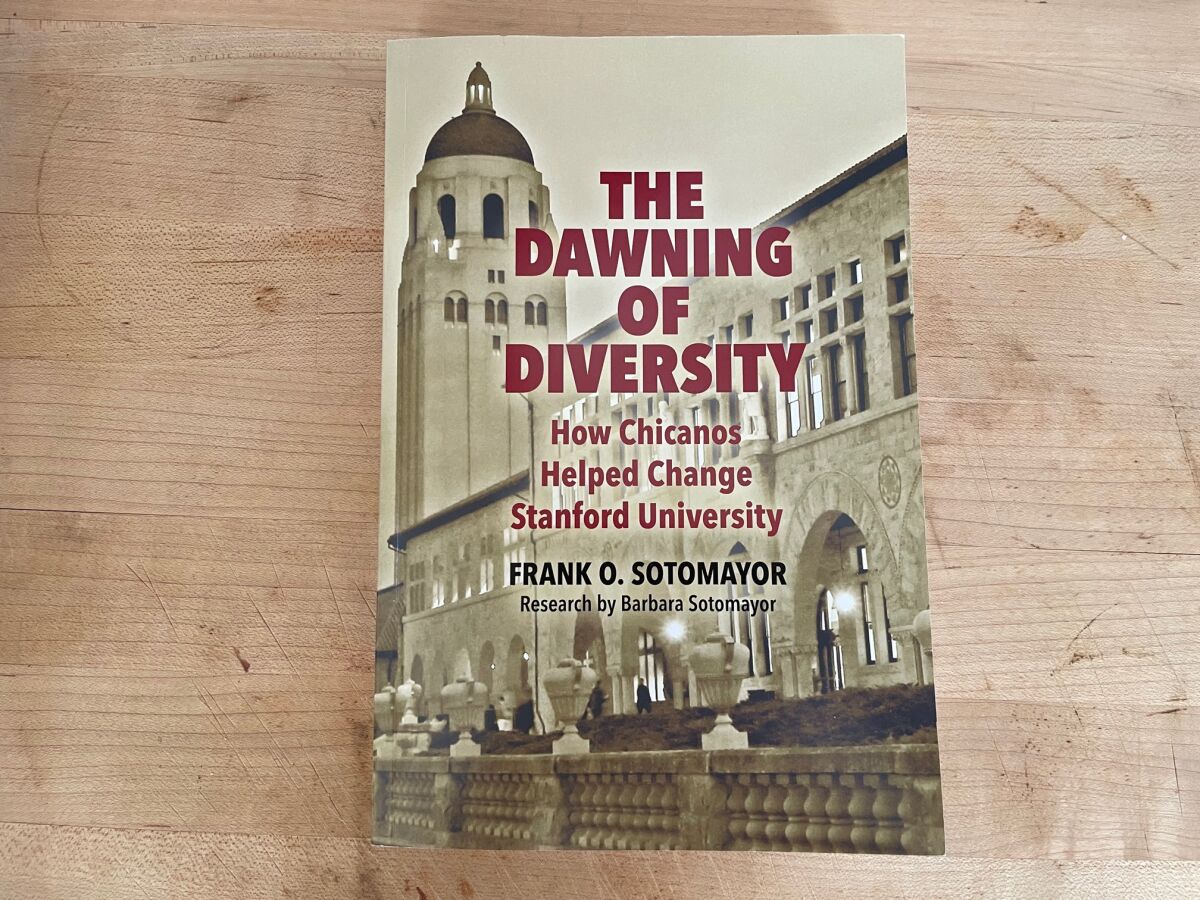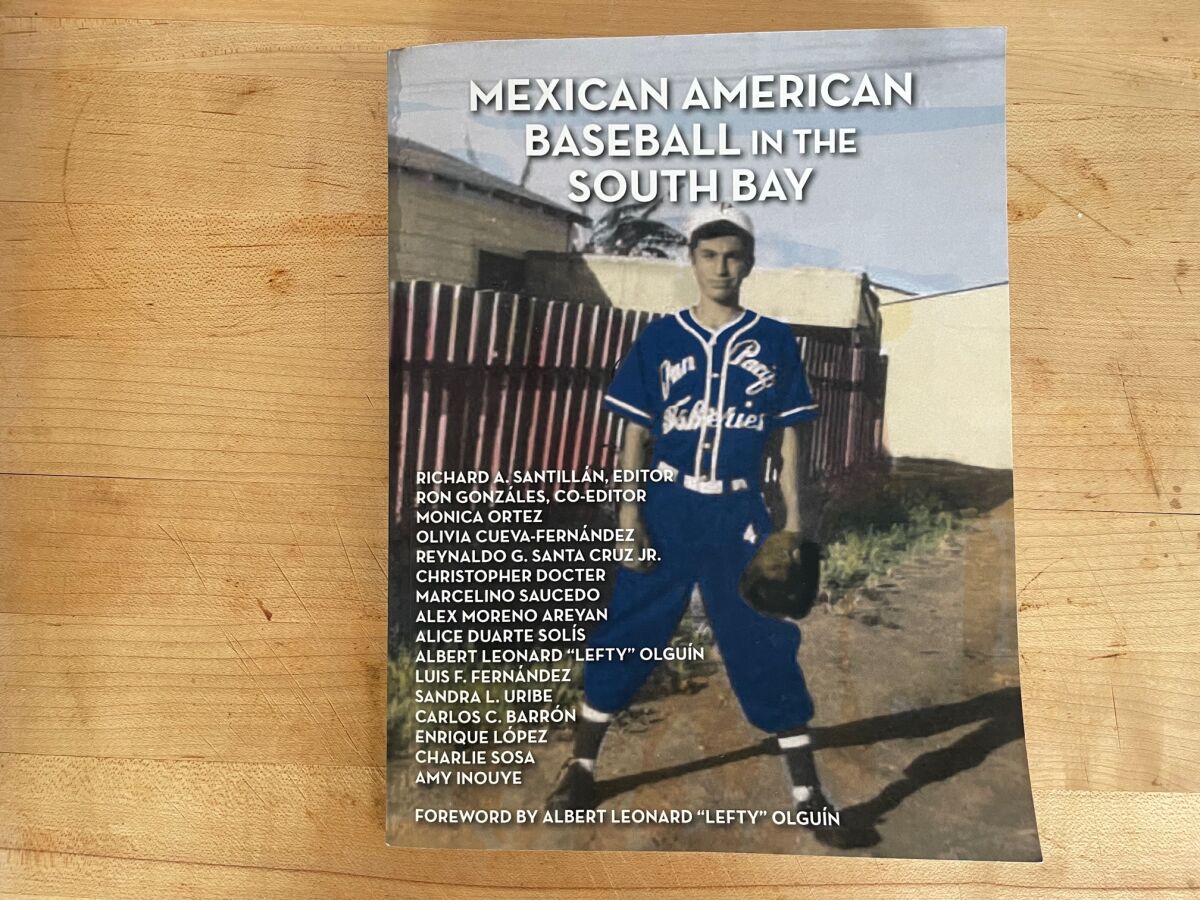If I had a dime for every time I hear Latinos aren’t a monolith, I’d be rich enough to run for mayor of Los Angeles.
Yet news stories about Latinos still largely veer between the tired tentpoles of exploited immigrants and up-from-bootstraps success stories, usually produced by reporters with no roots in their subject and no interest in digging deeper.
This is why I tell Latinos, when they complain about how the media depicts us, to do something about it. Write down or record anecdotes about who you are. Interview the folks who make up your specific community. Then let the rest of the world know about it.
Four books about Latinos in California released this year — perfect Christmas presents for anyone who cares about the state — do just that, proving another time-honored cliche: Representation matters.
When it comes to street-level photographers of Los Angeles over the past 30 years, only Ted Soqui and Gary Leonard can match the prolific mastery of Gregory Bojorquez. His snapshots of Chicano life — especially in Boyle Heights, East Los Angeles and Montebello — have long graced local and national publications. Now, he has collected hundreds of them in a gorgeous new coffee table book, “Eastsiders.”

“Eastsiders” by Gregory Bojorquez
(Gustavo Arellano/Los Angeles Times)
The photographer captures the area in the 1990s in all its highs and lows, mostly in black-and-white. We see well-kept tombstones of military veterans in Calvary Cemetery and hushed crowds at the East L.A. Classic, the annual football rivalry between Roosevelt and Garfield high schools. Grinning gang members who flash the signs of their clika. Lovers necking on a lawn. A boy throwing a perfect spiral down Ditman Avenue.
A pullout at the end of “Eastsiders” offers the location and year for each shot — another opportunity to marvel at how much Bojorquez has shown us of where he’s from.
Bojorquez’s sharply focused camera reveals every imperfection of his subjects, who have long been stereotyped as little better than poor or criminal just because of where they live. His nonjudgmental eye brings out their unfiltered joy and pride — they know their life is hard, ¿y que?
It would be great to know more about Bojorquez’s philosophy, but all he offers in a brief afterword is a simple yet profound artistic statement that also serves as a call to action: “I simply photographed what was around me.”
Henri Cartier-Bresson couldn’t have said it better.
It’s the same approach UC Riverside English professor Richard T. Rodríguez uses in “A Kiss Across the Ocean: Transatlantic Intimacies of British Post-Punk and U.S. Latinidad.” Rodríguez tackles one of the most annoying questions in music journalism: Why do Latinos like Morrissey/the Cure/British New Wave so much?

“A Kiss Across the Ocean” by Richard T. Rodríguez
(Gustavo Arellano/Los Angeles Times)
Rodríguez could’ve easily ripped into a press corps that still largely thinks Latinos only listen to Spanish-language music backed by either accordions or congas. He does critique them but limits the bile in favor of a warm, poignant memoir-analysis, which he writes is “animated by a deep investigative labor propelled by fannish investment.”
The profe takes readers back to his years as a queer brown teen in a 1980s Orange County that didn’t care for people like him. He found salvation and release through artists like Adam Ant, the Pet Shop Boys and Siouxsie and the Banshees, whose lead singer graces his book’s cover and whom Rodríguez describes by quoting another writer — “This woman was a weirdo … and completely unrepentant about it. I knew she was the one for me.”
The book ends in the present day, at venues like the Pacific Ampitheatre in Costa Mesa and Totally 80s Bar and Grille in Fullerton, where largely Latino audiences spanning generations sway to the Smiths or dance to Duran Duran.
Rodríguez does offer theories about the affinity — a short list includes shared working-class backgrounds between listeners and artists, lyrical themes of love and heartbreak that hark back to Latin American genres like bolero and ranchera, as well as genuinely great beats.
But he argues that’s the wrong question to ask. Instead, the curious should focus on what this fandom offers: a “fortuitous touch” of solidarity and resistance against a cruel world for true believers “that speaks of intimacy.”
Conviction also drives the protagonists of “The Dawning of Diversity: How Chicanos Helped Change Stanford University” by Frank O. Sotomayor. The former L.A. Times editor tells the history of Mexican Americans at the prestigious school, focusing especially on “the 71” — the Chicano students recruited by Stanford in 1969 from across the American Southwest in a push to diversify its student body.

“The Dawning of Diversity” by Frank O. Sotomayor
(Gustavo Arellano/Los Angeles Times)
Sotomayor tells the stories of almost all of them, contrasting Chicano alumni like himself with the eugenicist roots of Stanford’s founders.
He shows how Chicanos have played key roles in the school’s most important institutions, from its infamous marching band to its faculty and administration to its sports teams. Heisman Trophy-winning quarterback Jim Plunkett declined an offer to go pro his junior year because “quitting school wouldn’t present a good role model for young Mexican Americans,” Sotomayor writes.
This book could’ve easily come off as a vanity project or something more appropriate for a class reunion than the general public. Yet Sotomayor offers a fine case study that anyone (even Cal graduates) can enjoy, about a group of people who knew they were part of something bigger and thus did everything to succeed — not just for themselves but for future generations of Latinos.
“I hope this book motivates students and alumni from Stanford and other universities to write the stories of their own experiences,” Sotomayor writes in the introduction. “Don’t let good stories die. Let them live.”
The Latino Baseball History Project has long followed that advice. For the past 18 years, its contributors — academics, community historians and even former players — have created an incredible alternate timeline of the national pastime in Southern California, one where Major League Baseball is an afterthought in favor of the hundreds of barrio squads that have competed against one another from the early 1900s to the present.
The project has highlighted players, teams and leagues through museum exhibits and lectures but especially in a series of books that have covered almost all of Southern California (I wrote the foreword to the Orange County edition back in 2013). They’ve just released their most ambitious tome yet: the 464-page “Mexican American Baseball in the South Bay.”

“Mexican American Baseball in the South Bay”
(Gustavo Arellano/Los Angeles Times)
Through newspaper clippings, family photos, short essays and smart captions, contributors tell the stories of Latinos across the South Bay, from Redondo Beach to Dominguez Hills, Inglewood to San Pedro. The writers definitely know their history — many have published general histories of their hometowns for Arcadia Publishing’s popular “Images of America” series. They’re also humble enough to know their work is nowhere near complete. In “Mexican American in the South Bay,” they not only invite the public to help them out but challenge others to follow their example.
“There are many hidden baseball and softball treasures waiting to be unearthed,” states the introduction — not just in archives and attics but especially in “the beloved memories of elders.”
Reading through these books, I’m reminded of how almost none of the stories have made it into the “official” chronicles of California. These authors weren’t going to wait for others to do the hard work — they did it themselves.
So what are you waiting for? Read these books — and tell your own tale.
Stay connected with us on social media platform for instant update click here to join our Twitter, & Facebook
We are now on Telegram. Click here to join our channel (@TechiUpdate) and stay updated with the latest Technology headlines.
For all the latest Education News Click Here
